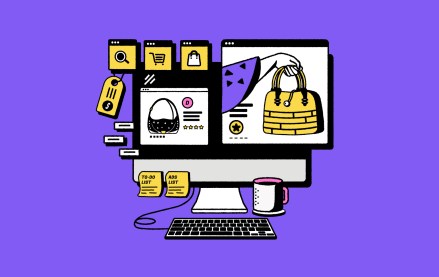Join us Dec. 1-3 in New Orleans for the Digiday Programmatic Marketing Summit

Emma Geary is digital creative solutions manager at British Vogue.
In recent years, each Apple operating system update – Apps, Newsstand and, more recently Apple News – has signaled its own watershed moment for publishing. However, the new ad blocking feature within the latest iOS 9 Safari update will demand from many publishers a full business-model audit.
The implications of the feature reverberate far beyond a clean-up of user experience, amounting to the most disruptive update yet. By introducing an ad blocker, Apple has created a triumvirate pressure that will put the heat under CFOs of startups and empires alike.
All media must adapt to Apple. Apple is such an omnipotent force that its innovations dictate product roadmaps and revenue forecasts with equal parity. Safari is the most widely used browser for mobile globally, with 42 percent share. What’s more, mobile is now the most important platform for publishers to cater to.
By blocking standard display ads on the mobile Web by the end of 2015, Apple is strongarming publishers into examining revenue models that diverge from the traditional banner-ad business. This is creating an industry shift by stoking the need for something that doesn’t exist today: a sophisticated model of native advertising.
Publisher approaches to native advertising to date tend to be split squarely between those who fear the wrath of the Advertising Standards Authority and those who fear the wrath of their readership. Native needs to leave that behind and grow up.
The new native will take several forms. In its most extreme incarnation, it is far removed from the backhanded compliment of “perceived editorial.” It is editorial. It is an integration model in which the sponsoring brand and the platform’s DNA assimilate so closely that the lines not only blur but dissolve, creating a distinct and wholly new third entity. For instance, Condé Nast France has devised a white label online magazine for Lancôme, Paris Inspires, which blends travel content with secret Parisian hangout features, a blog by style influencer Caroline de Maigret, supper party recipes and pilates technique – discerning Condé Nast editorial content. Lancôme products are subtly and seamlessly woven into the beauty element of the magazine, while the content is framed in a microsite with a fresh typography and a bespoke navigation bar removed from either the Lancôme and Condé Nast house styles.
In its less concentrated incarnation, the Native 9 model is inherently editorial but showcases the “sponsor” brand’s products that likely would have been showcased in an organic edit anyhow. It is essential that this balance is tastefully integrated, beyond the often transparent and unbranded sponsored “editorial” shoots in print magazines. In a true Native 9 partnership, the synergy between brand and platform should be so natural that the only possible result is to enhance and enrich the reader experience.This can be as simple an execution as a Vogue Shops gallery comprised of Chloé, Tom Ford and Stella McCartney, with the sponsor “thread” being an e-commerce link to each product “exclusively shoppable” at the sponsor e-tailer or department store. The commercial gesture is subtle, integrated and by no means undermines the editorial integrity of the product selections.
This kind of real assimilation goes beyond native and arguably is already at play; it’s no trade secret that all editorial is funded by advertising revenue. True editorial assimilation calls the ethics of disclosure into question, but if the content is a natural platform fit, devised, written and promoted by the editorial team and resonates so deeply that the reader can barely tell it’s paid for, does disclosure even matter? The inherent native paradox is that brands desire engagement and endorsement, but these are often best achieved by stripping overt branding from the content. In its most sophisticated form, native is synonymous with subtle product placement.
Platforms like Apple are innovating in real time. If native depends on context, and context is always shifting, then we need to move faster to develop new models. With iOS 9 slated for a September release, publishers have a matter of weeks to rip up the rules and start afresh; the tyranny of the click-through rate must give way to truly compelling content, editorial and native.
Image via Shutterstock
More in Media

Shopify just became the biggest company to launch a Substack newsletter
Shopify is the first company of its kind — an e-commerce platform — to take the plunge into Substack.

News Corp explores multi-LLM licensing playbook
If News Corp were to strike multiple licensing deals, it would be a major signal to the market that the media group isn’t betting on one LLM; it’s building a portfolio and setting the terms.

Media Briefing: Associated Press deal cements Microsoft’s quiet rise in AI licensing
Associated Press has joined Microsoft’s AI content marketplace, as the tech company seeks to strengthen media ties and compete with Google.





